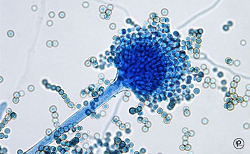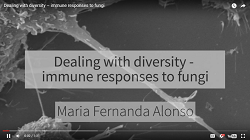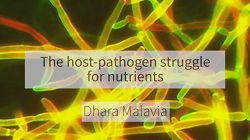Description:
In January 2016, the CEO of NETWORKS Sullivan Partnership, the economic development organization that serves Bristol, Bluff City, Kingsport and Sullivan County, contracted a viral infection called aspergillosis that landed the 52-year-old in Holston Valley Medical Center. He was placed in a drug-induced coma.
The experience was a “gift” that gave him a deeper sense of love, family and community, Walker said.
“I don’t get sick often,” he said Monday from NETWORKS’ Kingsport office. “I don’t miss work. I literally never missed a day of high school. So when I woke up in the intensive care unit hooked up to a ventilator with my mom — who lives six hours away — sitting beside me, I was confused to say the least.”
Aspergillosis is caused by a type of mold that, when left untreated, is usually fatal, according to the Mayo Clinic’s website. Walker, who had been sick since August 2015, explained that his doctor wasn’t looking for the virus because it normally attacks those with weakened immune systems.
“An infectious disease specialist told me that I was really not even a candidate to get the virus,” Walker said. “It usually only affects people whose immune systems have been compromised in some way — people in poor health or certain types of cancer survivors. We’ll probably never know how I got it — but fortunately they knew how to cure it — which is the thing that I’m really thankful for.”
Walker said he had been working long hours before he started feeling ill, but because he was pretty healthy he chalked his symptoms up to simple fatigue. After a few weeks of not getting any better, he visited an urgent care, where he was treated for allergies. By the beginning of winter, he was still sick so he made an appointment with his doctor.
“By November, I was so sick it was a struggle for me to climb the steps to my loft,” he said. “And once I was inside I would fall out from exhaustion so I went back to the doctor. He’d treat me and I’d get better for a little while. Then I’d get sick again only I’d be worse than I had been before. By January, there were several nights that I could barely catch my breath. One night about 11 o’clock I called Brian [Ritz, NETWORKS program manager] and asked him to take me to the hospital because it was so bad.”
Ritz, who arrived within minutes, said there was no way to describe the way he felt when he got Walker’s call.
“I was extremely worried when he called me,” he explained. “But when I saw Clay I knew he was a pretty sick guy and needed medical attention quickly.”
Walker was emotional as he recalled that night’s events.
“Brian took one look at me and said he was going to call an ambulance,” he said. “When the EMTs put the oxygen mask on me it was like giving a man in the desert a drink of water. The doctors told me that call to 911 probably saved my life.”
The last thing he remembers that night was seeing the ceiling and the lights in the emergency room. He gave Ritz his wallet and phone and asked him to check on him the following morning.
“My next conscious experience was waking up with my mother sitting beside my bed. Seeing the confusion on my face — she asked me what day it was and I didn’t know. That’s when I found it was Thursday and I had been in an induced coma for six days.”
That’s when he began to realize what it meant to feel the prayers of others, he said.
“I hope that’s one thing I never forget,” he said. “I could feel the prayers that had been prayed. Feeling those prayers was as real as feeling this table in front of me. I wish I had the words to adequately describe it.”
Walker said the first two weeks after he “woke up” were spent in the hospital. When he was released, he faced two months of recovery at home.
“When I started feeling better, the first person I called was my son, Ty,” said Walker again holding back tears. “I was lying in the hospital with this gross, coughing up this gross black stuff. I was thinking that I didn’t care if I got better. Then I thought about my son — he’s going to turn 26 next month — and I thought, ‘he’s not ready to be without a dad.’ He’s the most important person in the world to me. Thinking about him is what got me through this.”
He added that there was an overwhelming outpouring of support for him and his family during his hospital stay and illness.
A fan of country star Tim McGraw, Walker said there are two songs that he listens to differently since his ordeal. One is called “If I die today” the other is “Live like you were dying.”
“One says I wonder who I’d see crying standing over me and who would just send their regard,” Walker said. “The other talks about being the kind of friend I’d like to be. So now I hug people and tell them I love them more often than not. I’ve learned that it’s stupid to not to tell people how you feel about them. I also found out that the people that I considered friends considered me as a friend as well. And that means a great deal.”
Walker applauded his staff for the work they did while he was recovering and called them an amazing team.
“I’ve been in economic development for 20 years and this has been the best professional year of my life,” he said.
Walker said it’s unlikely he’ll ever get the virus again but he’s taking better care of himself so he can fulfill his purpose while he’s still here.
“I’ve lost about 18 pounds and am continuing to lose,” he said. “I work out and have gotten my blood pressure down. It’s something I have to work at but it’s worth it. God allows things in your life. And when those things happen we’re supposed to do something with it.”
He smiled when he said he believes that his purpose is to be a dad to his son, make an impact on this community and people in his life.
“We’re not promised tomorrow or even the end of the day,” he said. “So, what are we going to do while we’re here? I think it has everything to do with helping people. That doesn’t have anything to do with your bank account or accolades. It has everything do with our relationship to others.”
Medical and Patient education videos
-
Title
Description
-

Dr. Eavan Muldoon, Consultant in Infectious Diseases, University Hospital of South Manchester
-

Prof. Adilia Warris, Principal Investigator, Aberdeen Fungal Group, University of Aberdeen
-

Created by Patrick Hickey for the “Killer Fungus” exhibit at the 2016 Royal Society Summer Science Exhibition
A large dish of nutrient jelly inoculated with several different fungal species and then filmed over 5 days. The different colours of the fungal species used gradually grow to form the image and spell out the message ‘Killer fungus’.
The awareness, diagnosis and treatment of serious fungal infections needs dramatic improvement throughout the world as millions die needlessly every year.
The Royal Society Summer Exhitions are aimed at informing and inspiring the public – children and our future engineers and scientists in particular. Killer fungus is one exhibit amongst many more covering every aspect of science you can think of!
More
http://www.killerfungus.org/ h
ttps://twitter.com/ killerfungus16 https://www.facebook.com/ killerfungus16/ -

Fungi are everywhere. They’re present in the air, in our food, some even live inside our bodies. But most of us rarely think about diseases caused by fungi. This is because our defences do a really good job in keeping them in check.
However for millions of people whose immune system are defective fungi can cause serious infections that are hard to treat and can be life threatening.
A group of cells called phagocytes play a key role in keeping us safe from fungi. They normally patrol our body so when there’s a breach they are the first to respond. Their function is to seek eat and destroy microbial intruders.
But no all fungi are alike. My Ph.D. project aims to understand how phagocytes tackle such different targets. So far I have found there are huge differences in the rate at which various different fungi are engulfed by phagocytes.
The speed of these processes depends on the chemical composition of the fungi, whether they are alive or dead, and whether they are coated with human proteins that help to mark them as intruders.
Understanding the basic biology behind these processes is the first step towards developing new treatment strategies.
Maria Fernanda Alonso works in Professor Neil Gow’s lab at the University of Aberdeen.
-

Candida albicans is one of the fungal species most commonly causing life threatening infections in vulnerable patients. Our group is studying the mitochondria in Candida albicans cells.
Just like in our cells the mitochondria are the batteries of the cell, producing energy required for growth and in fungal cells can also influence infection.
The mitochondria can influence components of the fungal cell wall and its ability to infect us.
If we understand how mitochondria are influencing these factors, we can develop new anti-fungals or we can use existing anti-fungals in new combinations in order to tackle life threatening infections.
Lucian Duvenage works in Dr Campbell Gourlay’s lab at the University of Kent
-

Every day we inhale hundreds of fungal spores but these in healthy individuals are efficiently eliminated by specialist immune cells called phagocytes which engulf and kill them. However, some human illnesses interfere with this defence mechanism, increasing susceptibility to fungal diseases.
A specialist lung tissue called the epithelium is the first line of contact between the inhaled spores and us, the host. We are working to understand how the lung epithelium interacts with the spores of a common mould called Aspergillus fumigatus.
We have generated fluorescent Aspergillus and combined this with fungal and host specific dyes to directly visulaise this interaction. We have discovered that epithelial cells ingest fungal spores and kill them.
This might provide a critical defence mechanism which is acting while we breathe, and before even phagocytes arrive at the site of the infection.
We are now trying to work out how epithelial cells grab and ingest fungal spores, by using fluorescent fungal mutants and targeted elimination of host proteins.
Once we understand this process in detail we can design new therapies to assist a quicker elimination of the dangerous fungal spores we all inhale on a daily basis.
Dr Margherita Bertuzzi works in Dr Elaine Bignell’s lab at the University of Manchester
-

My research is focused on infections caused by Aspergillus, which is present in the environment all around us. We each inhale hundreds of fungal spores every single day, and for the majority of people this doesn’t cause any problems, but for people whose immune system isn’t working properly Aspergillus can cause serious, even life threatening, infections.
One group of patients who are at particular risk of Aspergillus infection are people with a rare inherited immune deficiency called chronic granulomatous disease, or CGD.
For these patients infection with Aspergillus is frequently fatal, even with appropriate anti-fungal treatment.
My research so far suggests that rather than not mounting a sufficient immune response, the CGD immune system actually over-reacts to Aspergillus, causing significant tissue damage but without clearing the fungal infection.
We’re therefore looking at whether we can use new treatments aimed at reducing inflammation alongside conventional anti-fungal drugs to improve the outcome of these devastating infections for CGD patients.
Dr Jill King works in Professor Adilia Warris’s lab at the University of Aberdeen
-

Cryptococcus, like many fungi, produces spores that are found in the air that we breathe. These spores will be inhaled into our lungs but they do not cause any harm because of our immune defences. However, they can cause life-threatening infections in individuals that have a weakened immune system, for example those that have AIDS or have had an organ transplant.
So, we’re interested in immune cells called macrophages which are needed for immune defence against Cryptococcus.
It is impossible to see how immune cells destroy this fungus during infection because we do not have see-through bodies. So, in order to study this we are using zebrafish. Zebrafish have a similar immune system like our own but are transparent which makes it possible to see how infections happen. Using zebrafish we are testing new ways to enhance immune defences against Cryptococcus.
Ultimately these investigations may lead to development of novel therapies towards Cryptococcal infections.
Alfred Kamuyango works in Professor Simon Johnston’s lab at the University of Sheffield.
-

We can view an infection as a battle between the human host and the microbial invader. The outcome of which decides whether the host remains healthy or succumbs to disease. As this battle rages microbial invaders use their hosts as a source of nutrients.
However, the human body has evolved complex systems to limit access to certain essential nutrients in an attempt to starve the invading microbes and prevent disease.
We call these processes nutritional immunity. Therefore, to win the battle and cause disease microbial pathogens must have evolved strategies to thrive in a nutritionally restrictive environment within its infected host.
We are interested in exploring how the human fungal pathogen Candida albicans adapts to limitations to essential trace nutrient zinc. We have identified specific coping mechanisms that are adopted by this fungus in order to deal with nutritional immunity. In response to zinc starvation,Candida albicans dramatically changed their cell shape.
We therefore want to know how this change is regulated and what impact it has on the progression of infection with the ultimate aim to therapeutically manipulate the system and push the balance back in favour of the human host to prevent disease.
Dhara Malavia works in Dr Duncan Wilson’s lab at the University of Aberdeen.
-

I have Sarcoidosis, Chronic Pulmonary Aspergillosis (CPA) and a very low CD4 count. I have challenged myself to do a daily vlog for 30 days
Follow me on twitter @StewArmstrong
Here is the link for all of the monthly aspergillosis meetings http://www.nacpatients.org.uk/monthly…
This meeting was for July 2016.
Aspergillus Website: Follow all of our Youtube collections here
